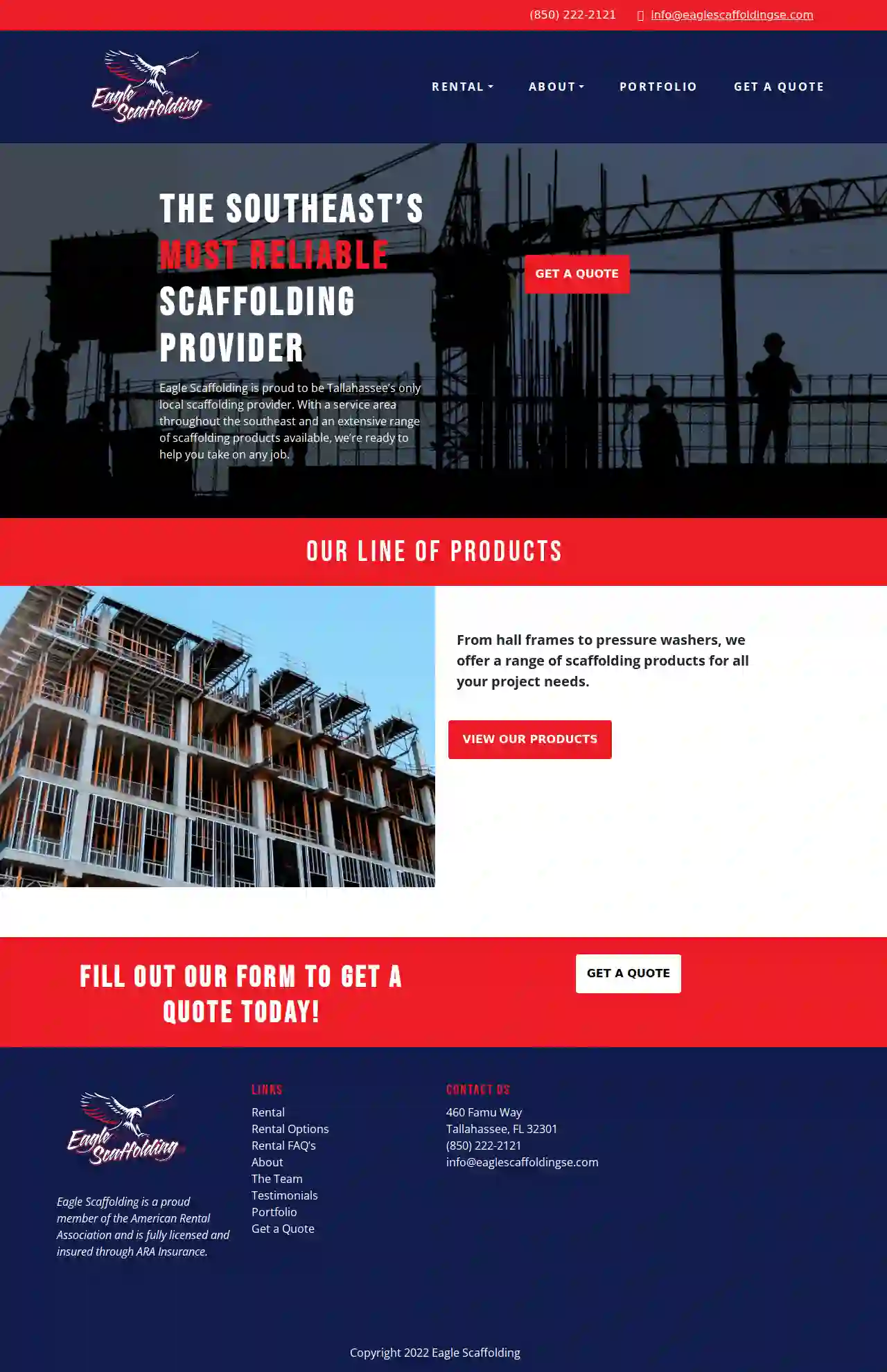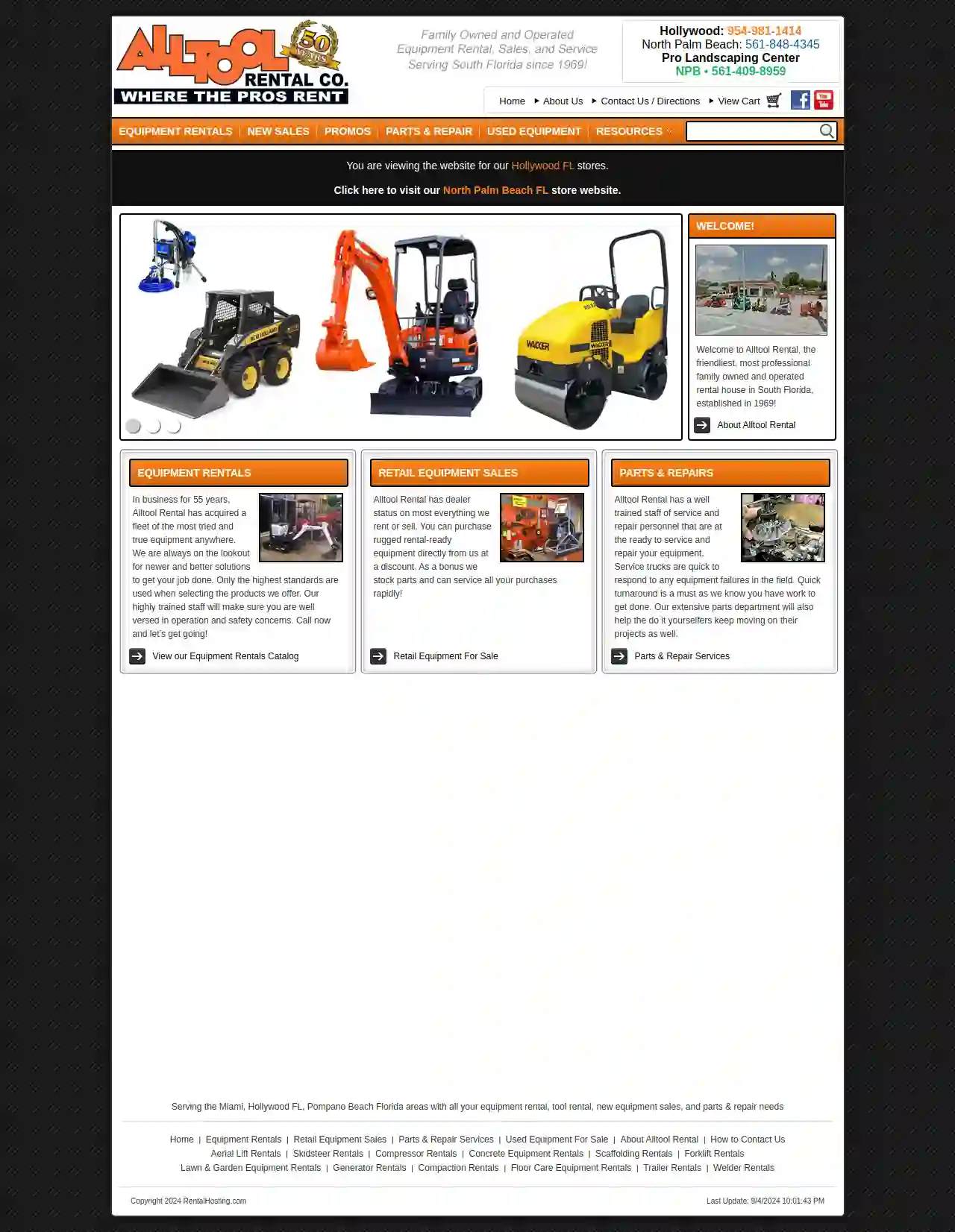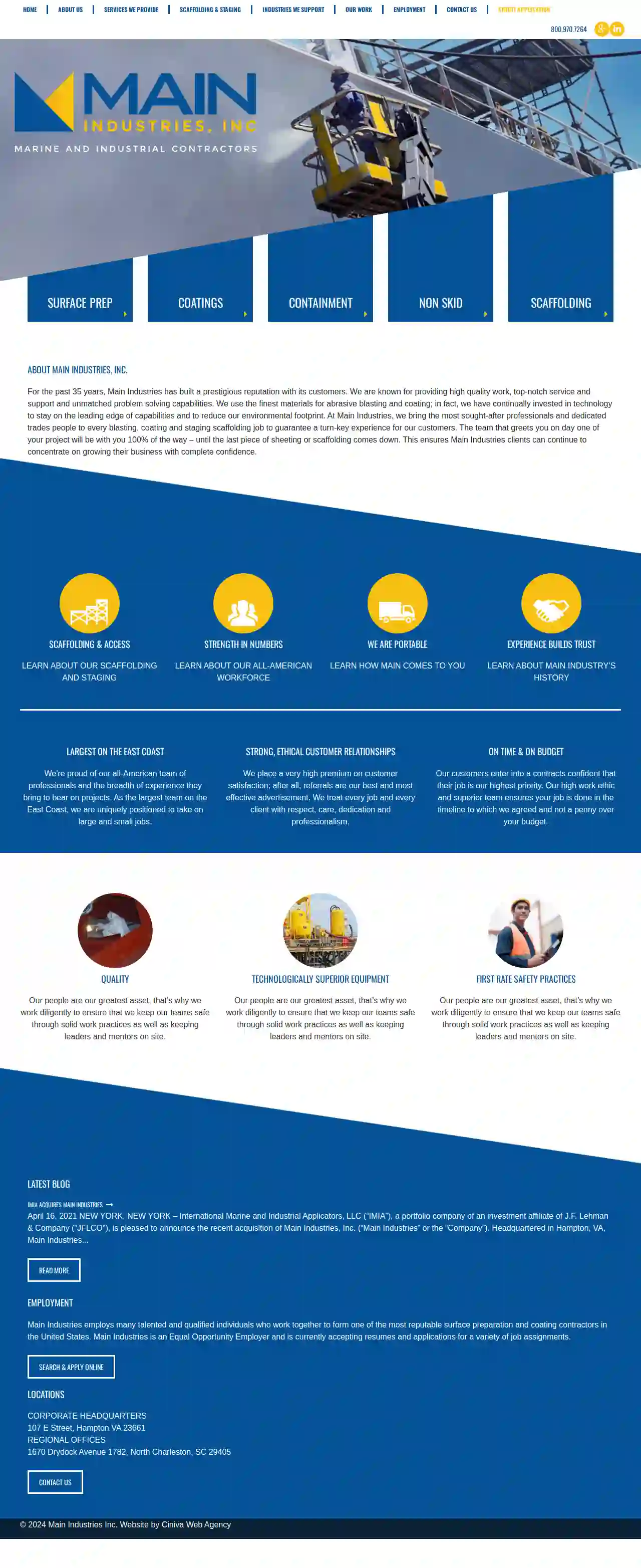Scaffolding Rental Valparaiso
Find top Rent Scaffolding in Valparaiso
Receive multiple Scaffolding Rental Services quotes for your project today! Compare profiles, reviews, accreditations, portfolio, etc... and choose the best offer.

Scaffold Solutions
Lauderdale Lakes, FL, 3685 West Oakland Park Blvd, Fort Lauderdale, 33311, USContractor Access Equipment is a construction industry business that specializes in scaffolding rental and installation services throughout Fort Lauderdale, FL and the United States. Our scaffolding companies purpose is to provide our customers with complete scaffold access solutions no matter how difficult the job. Since 2001, we have worked hard to become an indispensable resource for our customers throughout the United States. Our specialized experience in scaffold solutions, multiple branch locations and diverse inventory of scaffolding equipment means we can design and execute access solutions for almost any project environment.
- Services
- Why Us?
- Accreditations
- Our Team
- Testimonials
- Gallery
Get Quote
Tampa Scaffolding Rental
58 reviewsTampa, USTampa Scaffolding Rental provides scaffolding solutions for indoor and outdoor projects. We offer a range of services, including scaffolding rental, delivery, setup, and pickup. Our team is experienced and dedicated to providing top-notch service to our customers.
- Services
- Why Us?
- Gallery
Get Quote
Miami Scaffold Rental
9955 NW 116th Way, Ste. 8, Medley, 33178, USEnhance efficiency and safety with our comprehensive scaffold solutions Serving Miami-Dade, Broward and Palm Beach counties. We're Growing! New store opening now in Fort Lauderdale, to serve all your scaffold and high access needs. Come visit us, or call us. WHAT WE RENT? Our Services We maintain a full line of scaffold equipment and accessories to meet all your access needs. Our extensive inventory includes: System Scaffold Quick and easy Frame Scaffolding All your access needs Baker Scaffolding Safety and ease of use Suspended Scaffold High-rise exterior access Shoring Support structures Scissor Lift Overhead access Boom Lift Up-and-over positioning Specialized Hoist Repair Services Need highly-trained technicians to help diagnose and repair your hoist? We offer on-call, scheduled and in-house hoist repair services. Also, emergency repairs when needed ABOUT US Locally Owned and Operated We are a fast growing, independent, scaffolding rental company in the city of Miami. Delivering top quality equipment with strong customer service. Focused on building long term relationships, whether you just want to replace light bulbs, repaint your house or start you next big construction project. In a business where new challenges and opportunities arise daily, our knowledgeable staff consistently delivers. We also offer delivery/pickup service to your home or job site, usually the same day. And with an advance reservation we can do even better. If you are starting a project and want some advice, feel free to ask. We look forward to serving you in the Miami-Dade, Broward and Palm Beach counties. All our products meet OSHA and ANSI requirements. WHAT PEOPLE SAY ABOUT US? Leave us a review HAVE A QUESTION? NEED AN ESTIMATE? Contact Us If you need more information, fill out the form. A team member will reach out to help you soon
- Services
- Why Us?
- Gallery
Get Quote
Eagle Scaffolding
4.913 reviews460 Famu Way, Tallahassee, 32301, USEagle Scaffolding is proud to be Tallahassee’s only local scaffolding provider. With a service area throughout the southeast and an extensive range of scaffolding products available, we’re ready to help you take on any job. We provide rental scaffolding equipment to the Tallahassee area and up to 150 miles beyond, soon to be further. We can provide delivery or pick-up for rented equipment, which can be rented for weeks or months at a time. Our dream is to continue to expand our business, both geographically and commercially, to continue to serve a wider range of businesses with a more extensive range of products and services.
- Services
- Why Us?
- Accreditations
- Our Team
- Testimonials
- Gallery
Get Quote
Scaffold Shrinkwrap LLC
4.412 reviews1851 NORTH POWERLINE ROAD, POMPANO BEACH, 33069, USAt Scaffold Shrinkwrap LLC, we specialize in the erection and dismantling of scaffolding, as well as the application of shrinkwrap. Our team serves South Florida and surrounding areas with exceptional and cost-effective services. With a focus on safety and customer satisfaction, we provide top-notch scaffold sales and rentals, training, and expertise to ensure your next project is secure, affordable, fast, and easy. Our OSHA-trained and certified staff is led by a management team with over 25 years of industry experience. We pride ourselves on providing a unique combination of superb customer service, highly effective project and site management, and an environment of safety and excellence.
- Services
- Why Us?
- Gallery
Get Quote
Reach Services
4.36 reviews2110 Blount Rd, Pompano Beach, 33069, USReach Services is a premier provider of suspended scaffolding systems and specialty hoisting services for the South Florida Region and beyond. Founded in 1996, the company specializes in exterior preservation, façade restoration, unique and specialty projects, new construction, hoisting and rigging, and engineering. With a commitment to safety, service, and solutions, Reach Services offers comprehensive, turn-key construction access solutions. The company's dedicated teams specialize in the installation of suspended access systems, including versatile swing stage systems. They offer specialty hoisting, comprehensive safety training, and precise job site evaluations to ensure optimal safety and efficiency. Additionally, their service department provides repairs for hoists and equipment, conducted by certified, factory-trained technicians to maintain peak performance of access solutions.
- Services
- Why Us?
- Gallery
Get Quote
Hydro Rents Apopka
51 reviews2200 Clarcona Road, Apopka, 32703, USHydro Rents by BrandSafway: Your Partner for Safe and Efficient Construction Hydro Rents by BrandSafway is a leading provider of mast climbing work platforms and transport platforms, serving contractors and projects across the United States and Canada. We offer a comprehensive range of products and services, including: Safe and efficient mast climbing work platforms and transport platforms from Hydro Mobile A full range of masonry supplies, including flashing, cleaner, and sealer Rental and sales services Safety training Erection and dismantle services Technical support Maintenance services Layout and design services Our commitment to safety and efficiency is unwavering. We strive to provide our customers with the highest quality products and services, backed by expert knowledge and exceptional customer support. Whether you're working on a large-scale construction project or a smaller renovation, Hydro Rents has the solutions you need to achieve success. Contact us today to learn more about how Hydro Rents can help you deliver higher performance on your next project.
- Services
- Why Us?
- Gallery
Get Quote
Alltool Rental Co.
4.359 reviews1234 Hollywood Blvd, Hollywood, 33021, USWelcome to Alltool Rental, the friendliest, most professional family-owned and operated rental house in South Florida, established in 1969. With over 55 years of experience, we've acquired a fleet of tried-and-true equipment to help you get the job done. Our highly trained staff will ensure you're well-versed in operation and safety concerns. We offer equipment rentals, retail equipment sales, and parts & repair services, serving the Miami, Hollywood FL, Pompano Beach Florida areas. Our extensive parts department will help DIYers keep moving on their projects, and our quick turnaround service will get you back to work in no time.
- Services
- Why Us?
- Gallery
Get Quote
BrandSafway Solutions Tampa
4.519 reviews5401 W. Cypress St., Tampa, 33607, USAt BrandSafway, our Tampa branch is dedicated to providing top-notch access solutions to the construction, industrial, and infrastructure industries. With a strong commitment to safety, quality, and customer satisfaction, we offer a wide range of products and services to meet the unique needs of our clients. From scaffolding and forming to shoring and industrial services, our team of experts is equipped to handle projects of all sizes and complexities. With a rich history dating back to 1919, BrandSafway has established itself as a leader in the access industry. Our Tampa branch is part of a global network of over 30,000 employees, operating in more than 30 countries worldwide. This allows us to leverage our global expertise and resources to deliver innovative solutions that meet the specific needs of our local clients. At BrandSafway, we take pride in our people, our products, and our passion for delivering exceptional customer experiences. Whether you're working on a large-scale construction project or a smaller industrial maintenance task, our team is dedicated to providing you with the right solutions, expertise, and support to get the job done safely and efficiently.
- Services
- Why Us?
- Accreditations
Get Quote
Main Industries, Inc.
Hampton, VA, 107 E Street, 23661, USMain Industries, Inc. is a prestigious surface preparation and coating contractor with over 35 years of experience. The company is known for providing high-quality work, top-notch service and support, and unmatched problem-solving capabilities. Main Industries uses the finest materials for abrasive blasting and coating, and has continually invested in technology to stay on the leading edge of capabilities and reduce its environmental footprint. The company brings together the most sought-after professionals and dedicated tradespeople to guarantee a turn-key experience for its customers. The team that greets clients on day one of a project will be with them 100% of the way, ensuring that clients can concentrate on growing their business with complete confidence.
- Services
- Why Us?
- Accreditations
- Gallery
Get Quote
Over 2,353+ Scaffolding Contractors on our platform
Our scaffolding experts operate in Valparaiso and surroundings!
ScaffoldingHQ has curated and vetted Top Scaffolding Companies in Valparaiso. Find the most reliable business today.
Frequently Asked Questions About Scaffolding Rental
- Type of Scaffolding: Tube and clamp, system scaffolding, mobile towers, and specialized systems have different rental rates.
- Scaffolding Size and Height: Larger and taller scaffolding structures require more materials, increasing the cost.
- Rental Duration: The length of the rental period will significantly affect the price.
- Location: Rental rates can vary by location due to differences in labor costs and demand.
- Delivery and Setup: Some companies charge extra for delivery, erection, and dismantling services.
- Reputation and Experience: Look for a company with a good track record and a history of satisfied customers.
- Licensing and Insurance: Ensure they have the proper licenses and insurance coverage to protect you from liability.
- Safety Practices: Inquire about their safety policies, training programs, and inspection procedures.
- Equipment Availability and Quality: Confirm they have the type of scaffolding you need and that it's in good condition.
- Pricing and Rental Terms: Compare quotes and assess the rental rates, duration, and any additional fees.
- Customer Service: Choose a company that is responsive, communicative, and helpful.
- General Liability Insurance: Provides coverage if someone is injured or property is damaged due to your use of the scaffolding.
- Worker's Compensation Insurance (if you have employees): Covers medical expenses and lost wages for employees injured while working on the scaffolding.
How much does it cost to rent scaffolding?
What are some things to consider when choosing a scaffolding rental company?
Can I modify or alter the scaffolding after it's erected?
Do I need insurance to rent scaffolding?
How much does it cost to rent scaffolding?
- Type of Scaffolding: Tube and clamp, system scaffolding, mobile towers, and specialized systems have different rental rates.
- Scaffolding Size and Height: Larger and taller scaffolding structures require more materials, increasing the cost.
- Rental Duration: The length of the rental period will significantly affect the price.
- Location: Rental rates can vary by location due to differences in labor costs and demand.
- Delivery and Setup: Some companies charge extra for delivery, erection, and dismantling services.
What are some things to consider when choosing a scaffolding rental company?
- Reputation and Experience: Look for a company with a good track record and a history of satisfied customers.
- Licensing and Insurance: Ensure they have the proper licenses and insurance coverage to protect you from liability.
- Safety Practices: Inquire about their safety policies, training programs, and inspection procedures.
- Equipment Availability and Quality: Confirm they have the type of scaffolding you need and that it's in good condition.
- Pricing and Rental Terms: Compare quotes and assess the rental rates, duration, and any additional fees.
- Customer Service: Choose a company that is responsive, communicative, and helpful.
Can I modify or alter the scaffolding after it's erected?
Do I need insurance to rent scaffolding?
- General Liability Insurance: Provides coverage if someone is injured or property is damaged due to your use of the scaffolding.
- Worker's Compensation Insurance (if you have employees): Covers medical expenses and lost wages for employees injured while working on the scaffolding.